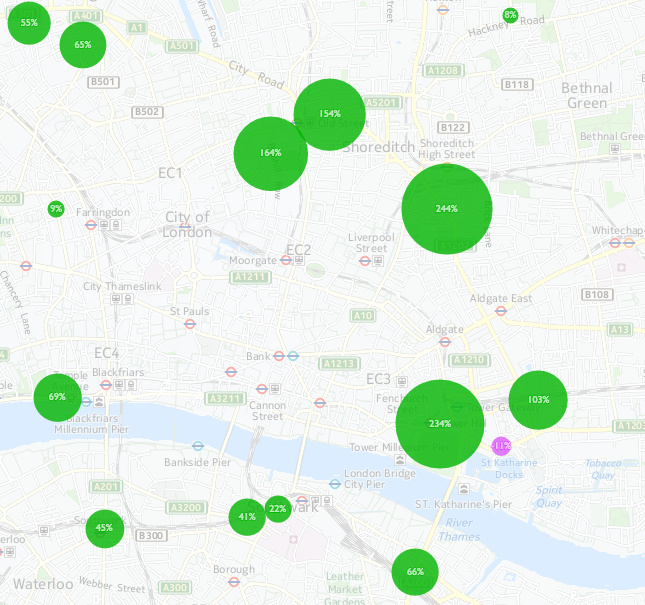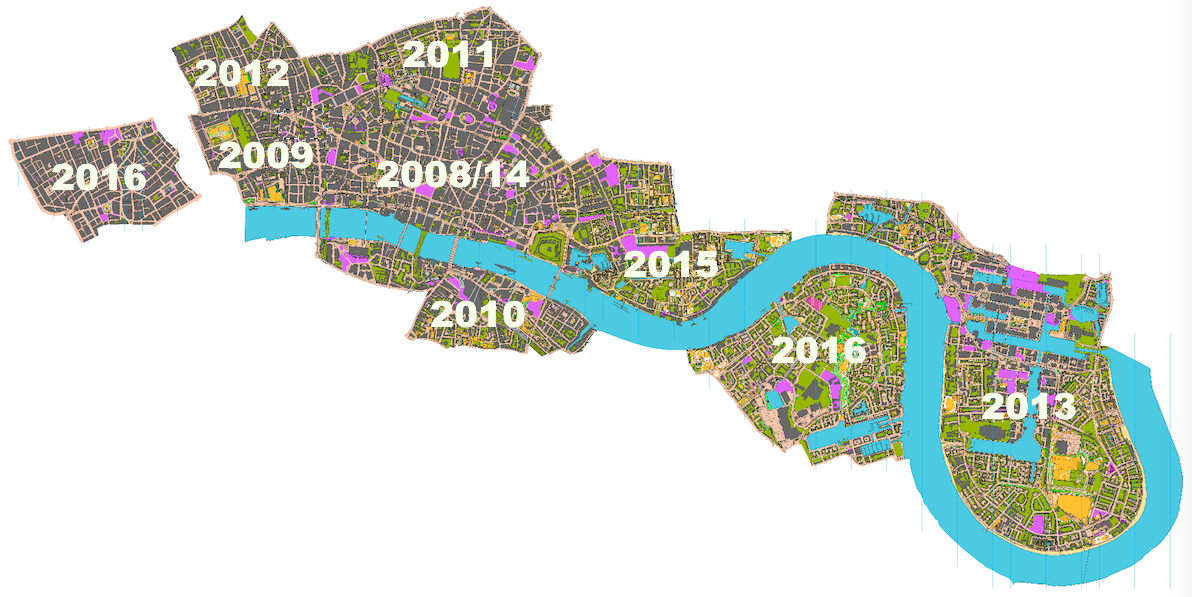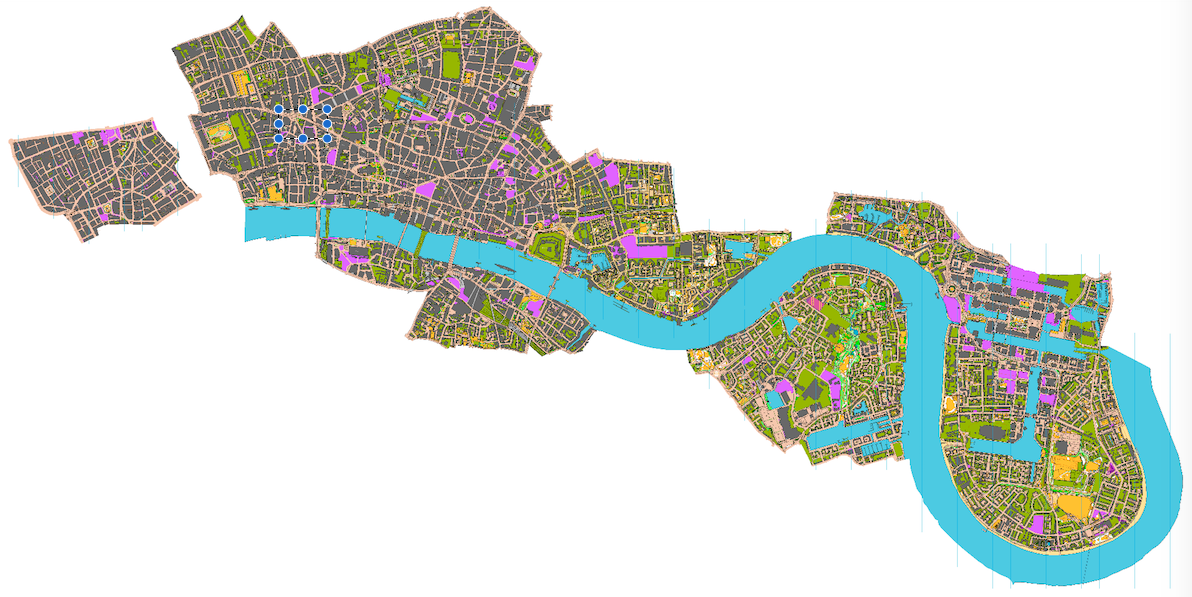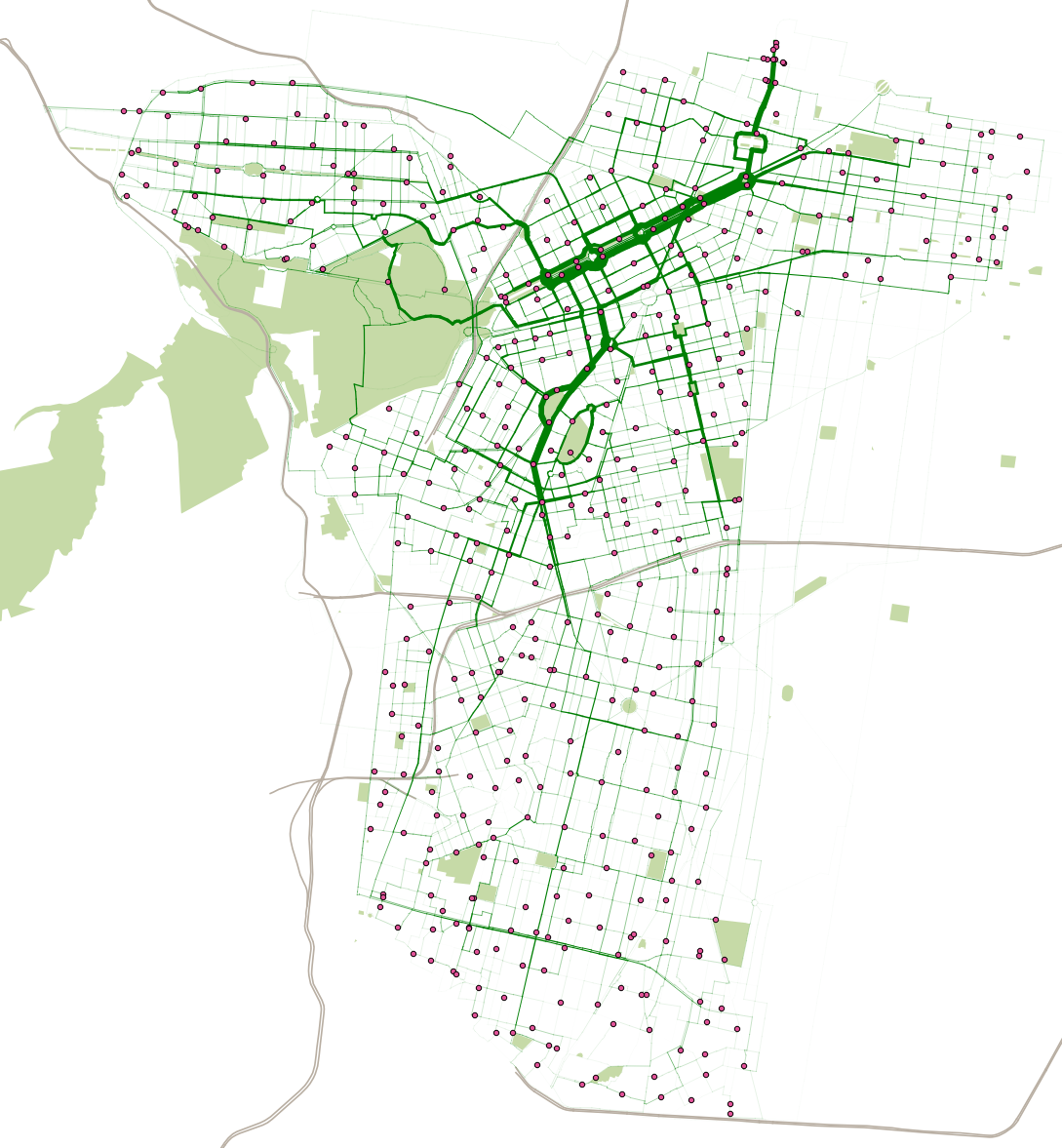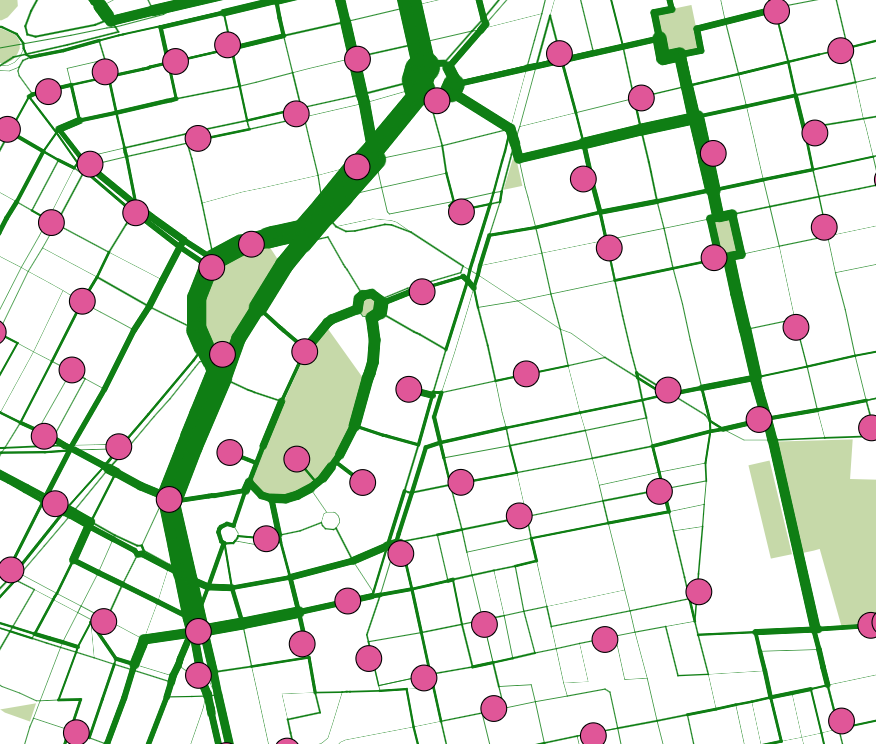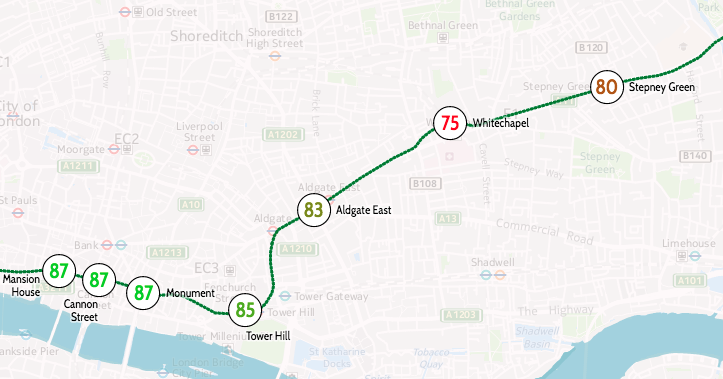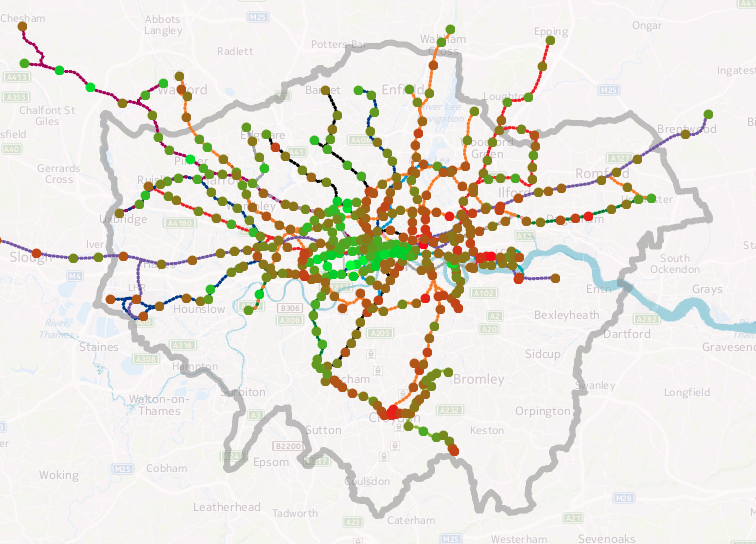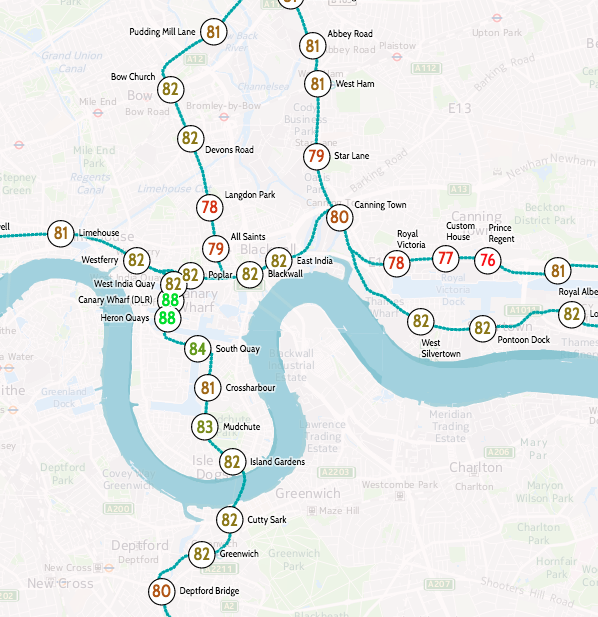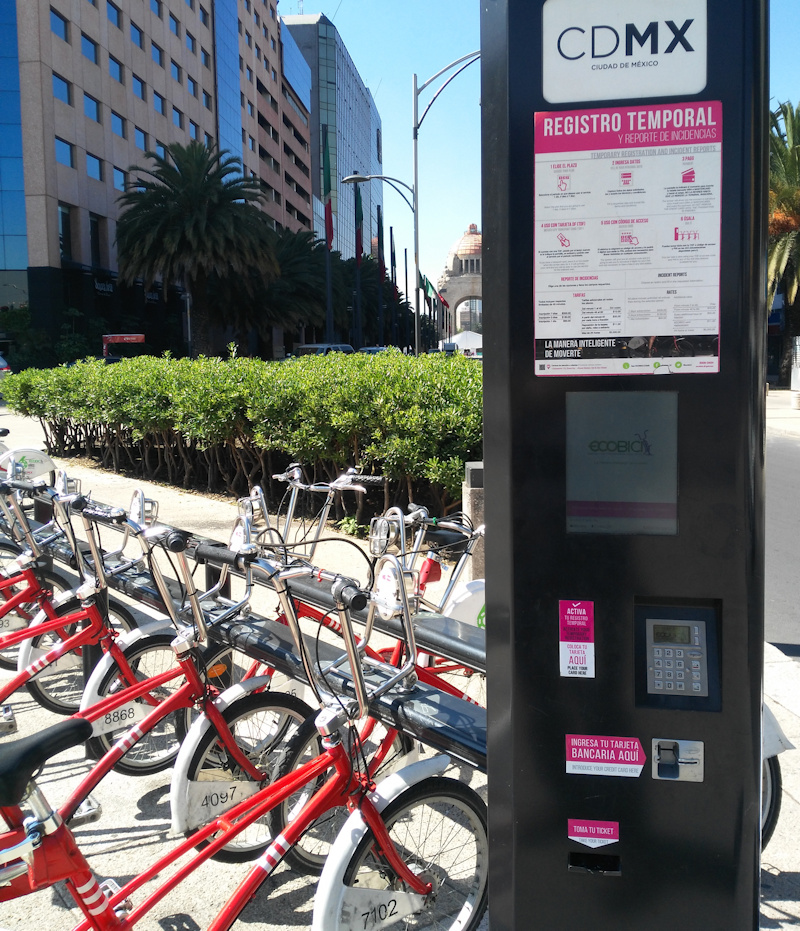Crossrail’s Elizabeth Line will launch in the following stages:
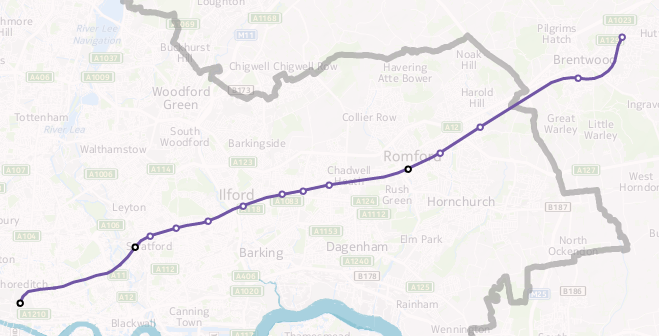
-
- Phase 0 – May 2015 – TfL takes control of the Liverpool St (high level) to Shenfield line, a single section with no forks.
- Phase 1 – May 2017 (above) – The new Crossrail trains start to appear on the Liverpool St (high level) to Shenfield line, a single section with no forks.
- Phase 2 – May 2018 – TfL takes control of the Heathrow to Paddington (high level) line and introduces Crossrail trains to it. TfL Rail is now two disconnected sections with no forks.
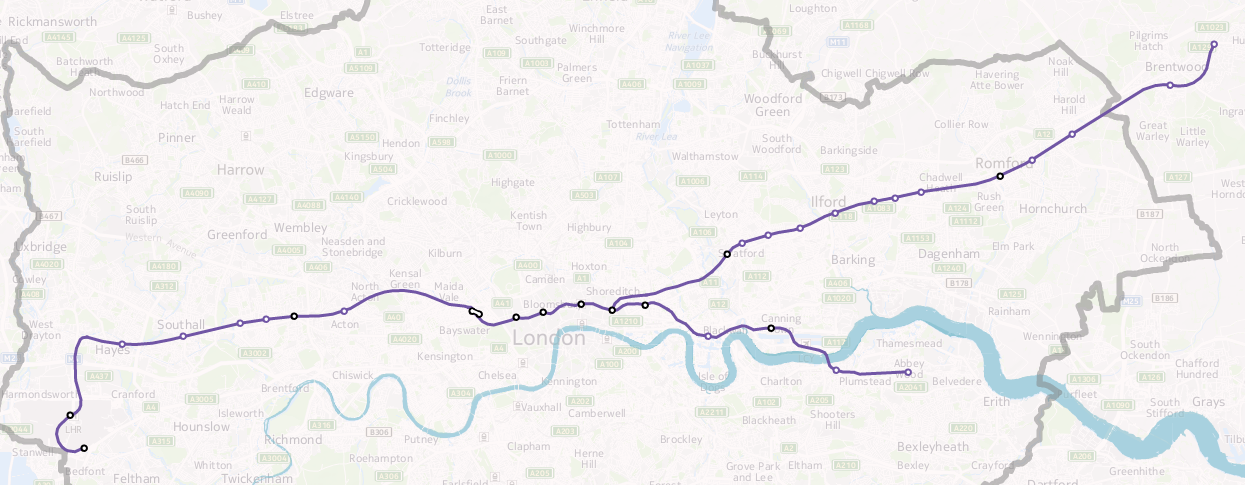
-
- Phase 3 –
December 2018(above) – Services start running from Paddington (low level) to Abbey Wood, via Liverpool Street (low level). Services formally switch from being branded as TfL Rail to being the Elizabeth line. First trains through the centre. Crossrail has three disconnected sections, and no forks. - Phase 4 –
May 2019– Trains from Paddington (low level) to Shenfield, joining the existing service to Abbey Wood. Crossrail has two disconnected sections, with the eastern section forking twice. (The second eastern fork is a reverse one – a small number of trains will continue to start from Liverpool Street (high level) to Shenfield, missing Whitechapel and joining at Stratford.)
- Phase 3 –

- Phase 5 –
December 2019(above) – Full services running, all via Paddington (low level) and Liverpool Street (low level), from Reading too Shenfield and from Heathrow to Abbey Wood. Crossrail is a single, connected railway, with a fork to the west and two forks to the east.
[UPDATE] Following the announcement of Crossrail’s delay, it looks like Phase 3 will actually be the services running from Reading into Paddington – which will become part of TfL, in December this year. With luck, some time in early 2020, then services will start running between Paddington and Abbey Wood – a revised Phase 4. This is the separated section from existing National Rail services, so it doesn’t need to wait for the May or December timetable changes. I would imagine that the new Phase 5 – the Whitechapel link, could start in May 2020, with a new Phase 6 – services running from the west into the new tunnels, maybe in December 2020.


